In Hanoi, there are still old streets with characteristics which have created the urban hallmarks of the capital city in the north. Hanoi today also has new features, which are more modern, youthful and dynamic, with large avenues and high-rise buildings.
More than ten years ago, Hanoi residents were so familiar with the small streets, lanes and short streets, which were laid out in an order similar to a chessboard, that they knew them like their palms. But now nobody can say he/she knows all the roads and streets in Hanoi because the streets are much different than before. With the exception of the old quarter in the centre of the city, a large transport system has been built. All of the new roads are large and beautiful, such Thang Long Avenue, Nguyen Chi Thanh, Le Van Luong, Pham Hung and Khuat Duy Tien Roads and Bac Linh Dam - Mai Dich Highway.
Seen from above, especially at night, the new roads in Hanoi look like a sparkling river of light running through the heart of the city. In the near future Hanoi will have a system of overhead railways. At that time, city residents and visitors will have a new pastime of exploring the thousand-year-old Hanoi from different angles.
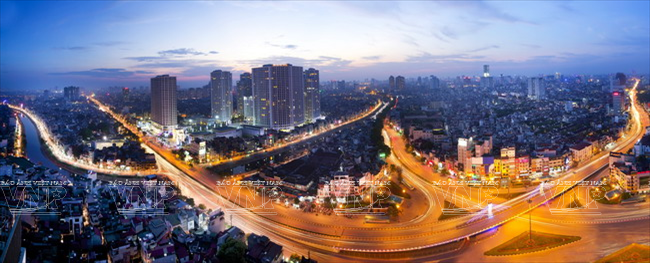
Ever-developing Hanoi has a new modern appearance of a city of world stature. Photo: Tran Anh Tuan
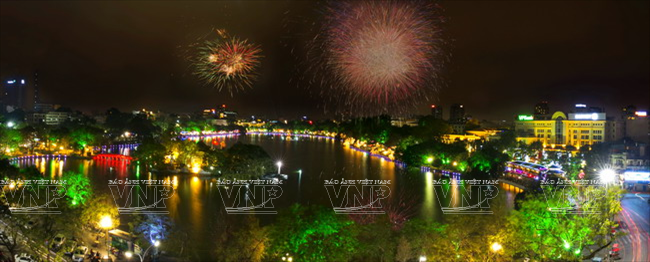
Sword Lake immerses in the colourful light of fireworks during New Year’s Eve. Photo: Nguyen Hoang Hai
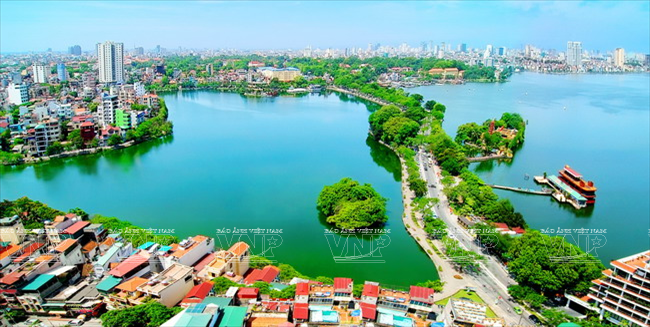
The mixture of modern parts and the old ones with cultural and historical values
on the side of West Lake. Photo: Dinh Huu Ngot
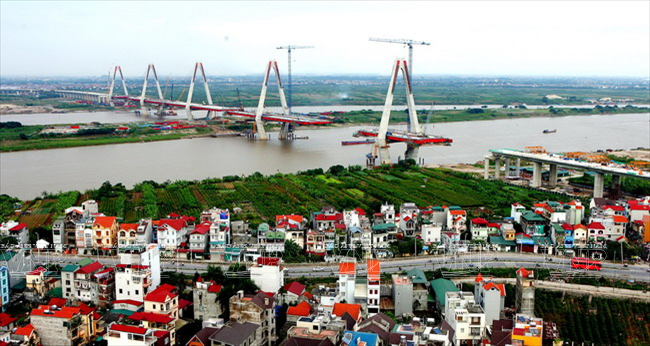
Nhat Tan Bridge, the most modern cable-stayed bridge in Vietnam,
is a new symbol of Hanoi. Photo: Tran Huy Hoang

Part of ring road No. 3 running through My Dinh (Nam Tu Liem District). Photo: Cong Dat/VNP

The Phap Van – Cau Gie intersection. Photo: Tran Huy Hoang
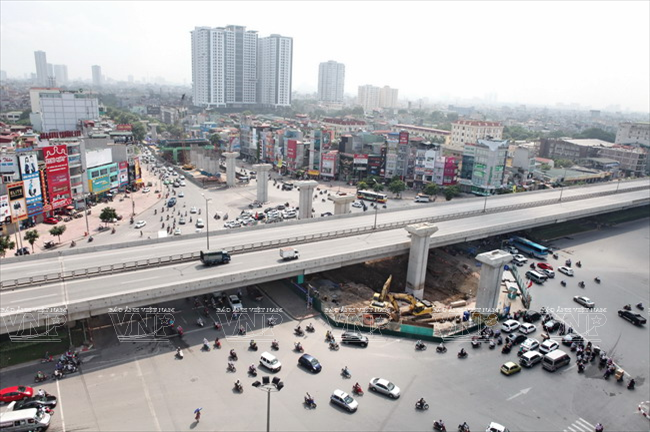
The intersection between ring road No. 3 and overhead railway
in Thanh Xuan District (Hanoi). Photo: Tran Thanh Giang/VNP
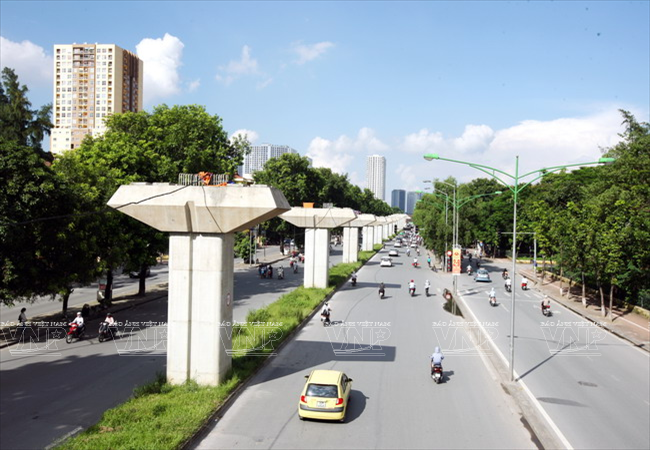
The overhead railway running through Thanh Xuan District is in progress. Photo: Tat Son/VNP
In 2005 Hanoi had a population of over three million people. Today there are over seven million people living here. The increasing population caused pressure on urban transportation. So, traffic jams were a chronic disease of Hanoi. To solve this difficult problem, the city authorities have found many drastic solutions.
One of the first hallmarks was the construction of big flyovers made of steel at important intersections inside the city. These flyovers are beautiful and durable and the construction takes only a short period of time, so this is an optimal solution for a city with complex transport infrastructure like Hanoi. In less than two years, many modern flyovers, such as those at the intersections of Nguyen Chi Thanh – Lang, Lang Ha – Thai Ha and Chua Boc – Tay Son have been built, helping solve the problem of traffic jams. These flyovers also contribute to beautifying and modernizing the urban transport system which was once poor and obsolete.
Apart from the bridges crossing the Red River, which were once the development symbols of the capital city, such as Long Bien, Thang Long and Chuong Duong Bridges, there are many newly-built bridges of the 21st century stature, such as Vinh Tuy, Thanh Tri and Nhat Tan Bridges, facilitating the transportation across the river.
Small cities in the heart of Hanoi
Along with the transportation infrastructure, the appearance of urban areas in Hanoi has experienced a lot of changes, becoming larger and more modern. In the past, Hanoi was well-known for its ancient quarter and old streets with rows of brown-roofed houses or luxurious and romantic villas of the French classic architecture. Now, besides these old features, the city has many new urban areas with a new, youthful and dynamic architectural style of modern times.
That is the reason why many foreign tourists have good feelings when they visit Hanoi. That is because, besides an old charming Hanoi, there is an attractive and modern Hanoi that looks slightly like Hong Kong, Singapore, Tokyo or some other Asian capitals, because it also has high-rise buildings and new urban areas, such as Keangnam Tower, Indochina Plaza, PetroVietnam Tower, Linh Dam, Ciputra - Nam Thang Long, Times City, Royal City, The Manor, Mandarin Vineyard and Vincom Village.
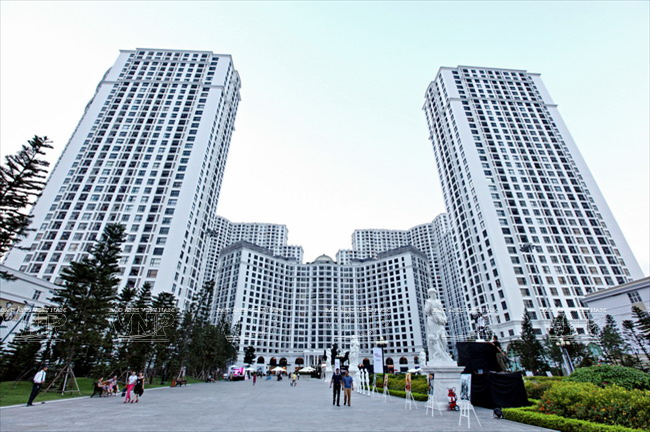
The Royal City Mega Mall in Thanh Xuan District. Photo: Tat Son/VNP
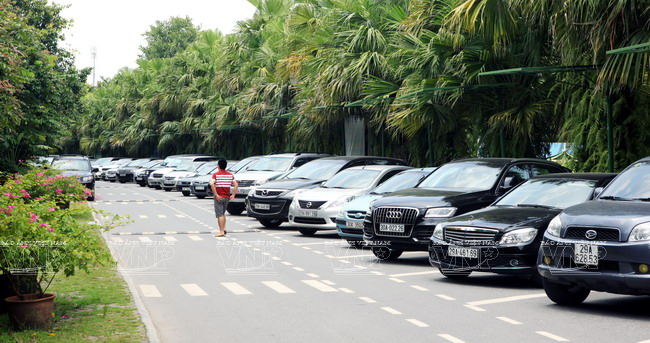
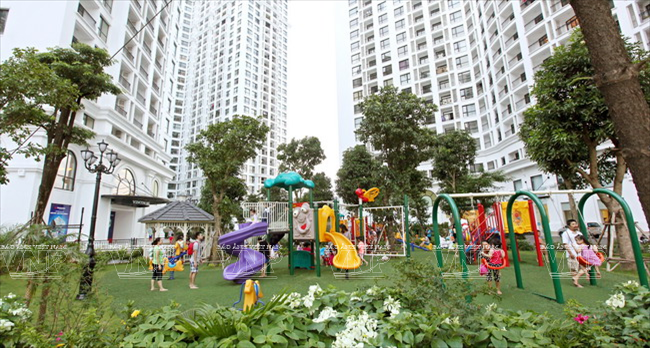
The car-park and childrens’ playground at Royal City. Photo: Tran Thanh Giang/VNP

Inside the Royal City Mega Mall. Photo: Tran Thanh Giang/VNP
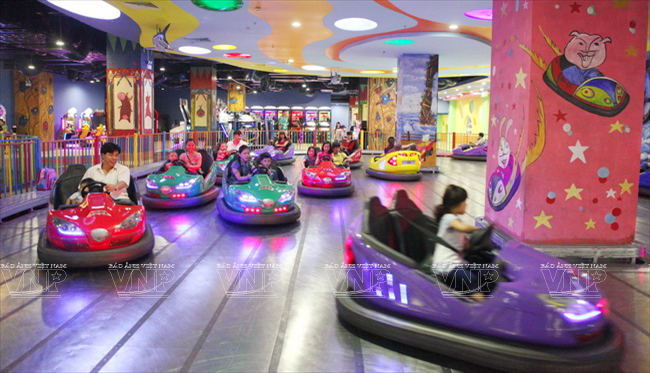
Part of the entertainment area at Royal City. Photo: Tran Thanh Giang/VNP
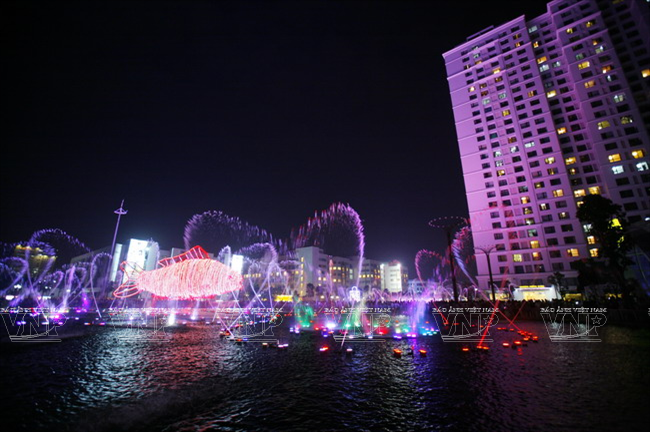
Night at Times City. Photo: Van Quyen/VNP
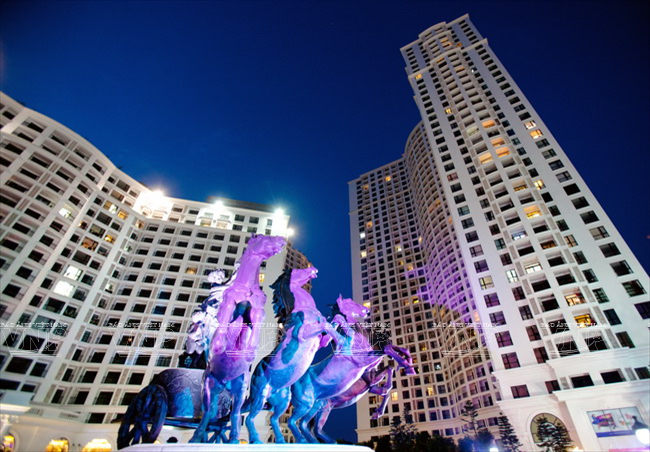
Part of Vincom Royal City. Photo: Trong Chinh/VNP
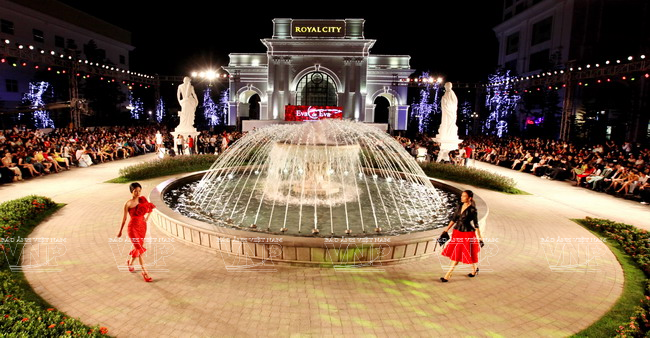
Many big fashion and entertainment events have been held
at the main square of Royal City, Hanoi. Photo: Tat Son/VNP
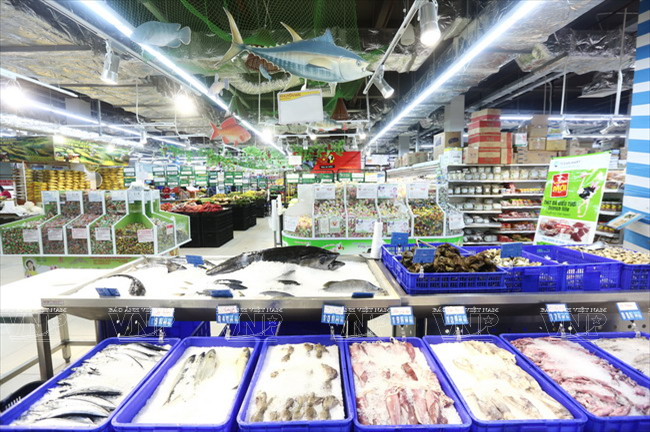
Part of Ocean Mart at Times City. Photo: Hoang Ngoc Ky/VNP
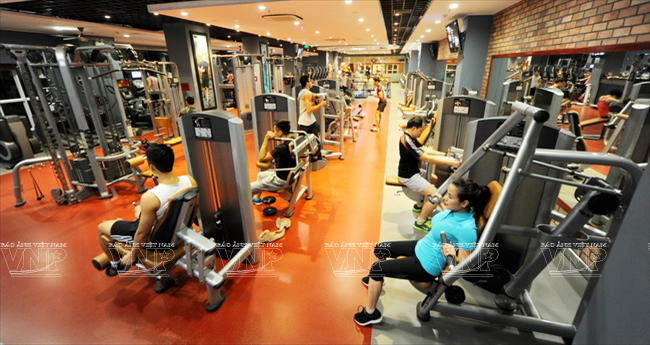
The gym at the Garden Shopping Center, Hanoi. Photo: Tran Thanh Giang/VNP
All these new-style architectural complexes have some features in common, i.e, modernity, comprehensiveness and convenience. With a good infrastructure and services, they provide ideal living conditions for people who live and work there. They are even considered small cities because they have sufficient green space, supermarkets, schools, hospitals and amusement and entertainment services including hotels, restaurants, swimming pools, discotheques, cinemas, gyms and children’s playgrounds. In short, in these “small cities” people can find almost everything required in a modern world.
The Hanoi authority has carefully calculated the construction of the new urban areas which meet the requirements in terms of the use and quality, at the same time ensure the existing traditional landscapes. The ancient quarter and old streets have been kept intact as a focal point of the central area where many cultural and traditional heritage relics are preserved. In the meantime, the new urban areas have been built in the surrounding areas, creating complexes of modern and systematic cities which are connected together and have different functions.
Thus, since King Ly Thai To moved the capital city from Hoa Lu to Thang Long (present-day Hanoi) in 1010, and the city was liberated from the occupation of the French colonialists 60 years ago, the image of the capital city of Vietnam has changed many times, each time with a specific value and historical mission. This time Hanoi is experiencing great changes to become the nerve centre and the heart of the country and a city of world stature.
Story: Thanh Hoa - Photos: VNP’s reporters & freelancers